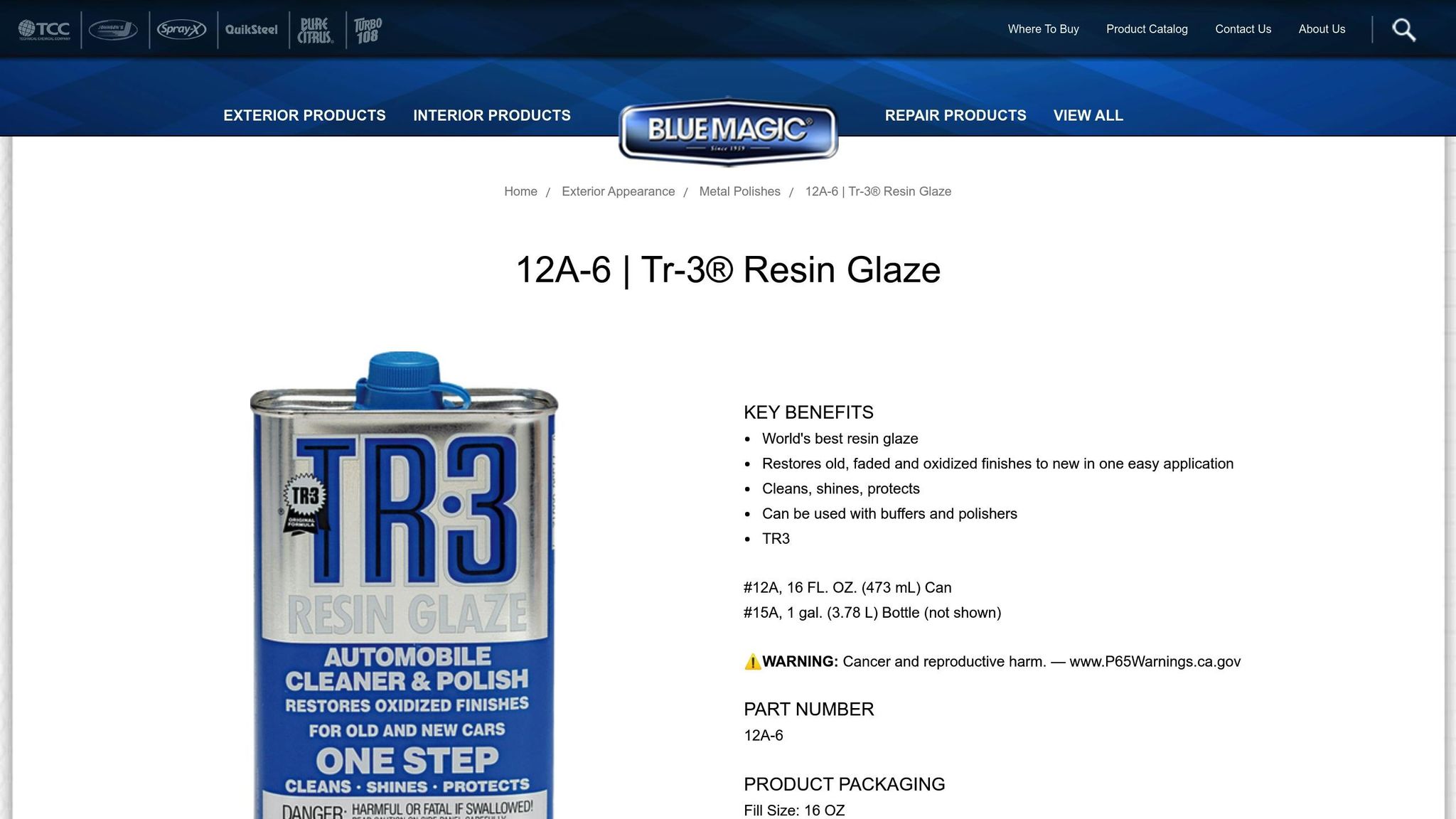September 30, 2025

Owning a vehicle or RV comes with the responsibility of maintaining its aesthetics and performance. Over time, exposure to the elements can leave your vehicle’s paint looking dull, chalky, and aged due to oxidation - a common issue for older paint finishes and single-stage paints. Fortunately, you don’t need to spend a fortune or resort to professional buffing to breathe life back into your car’s exterior. This article provides a step-by-step breakdown of how to remove oxidation and restore your vehicle’s paint using TR3 - a time-tested product known for its exceptional results.
Whether you’re a Utah local aiming to keep your RV road-ready or a car enthusiast restoring a classic vehicle, this guide will help you achieve a revitalized, polished look without compromising your paint. Let’s dive in.
Oxidation is the chemical breakdown of a vehicle’s paint caused by prolonged exposure to UV rays, oxygen, and environmental elements. It often manifests as a chalky, faded, or uneven surface that diminishes your vehicle’s curb appeal. For single-stage paint finishes (common in older vehicles), oxidation can be especially noticeable, as the paint lacks the protective barrier of a clear coat.
Restoring oxidized paint doesn’t just improve aesthetics - it also preserves the integrity of the paint, protects against further damage, and maintains the value of your vehicle. While many assume buffing is the only solution, there’s a chemical method that’s faster, easier, and avoids the risk of paint removal.

TR3, a long-standing product praised for its effectiveness, works by chemically removing oxidation rather than physically stripping it away. Unlike abrasive rubbing compounds or buffing tools that risk thinning the paint, TR3 penetrates the oxidized layer and lifts it off, leaving the base paint intact.
Key benefits of TR3 include:
If you’re ready to transform your vehicle’s chalky paint into a smooth, glossy finish, follow these steps for optimal results.
Before starting, ensure you have the following:
Start by cleaning the vehicle thoroughly to remove dirt, debris, and contaminants. This ensures the TR3 product can work directly on the paint without interference.
Allow the product to sit for a few moments. This gives it time to penetrate the oxidized surface and chemically bond with the chalky buildup. The process is akin to how soap lifts dirt from a surface.
Once the product dries slightly, return with a clean towel to wipe away the residue. You’ll notice the restored paint underneath, vibrant and glossy as it was originally.
Pro Tip: For heavily oxidized areas, you may need to repeat the process once or twice to fully remove the chalky layer.
After restoring the paint, apply a protective coating, such as Menzerna Power Lock, to seal the finish. This step adds a durable protective layer, making future washes easier and extending the life of your restoration.
Many drivers are hesitant to buff their vehicles, fearing it may remove too much paint or damage the surface. Buffing is a more abrasive process that’s better suited for thicker two-stage finishes. For single-stage paint, chemical oxidation removal like TR3 is gentler, preserving the paint while still delivering impressive results.
After completing the process, your vehicle will transform from dull and weathered to vibrant and polished. TR3 not only restores the original color but also creates a subtle protective sheen that mimics a clear coat. Even older vehicles can achieve a "like new" appearance with a bit of time and effort.
Once your paint has been restored, maintaining it is key. Regular washing, keeping the vehicle in a shaded area, and reapplying a protective sealant every 12 months will keep your vehicle looking sharp. By incorporating these steps into your routine, you can prevent future oxidation and preserve your car’s vibrant appearance for years to come.
TR3 may be a nostalgic product for some, but its results remain timeless. Whether you’re restoring a classic car or refreshing an RV, this affordable solution proves that you don’t need high-tech tools or specialized skills to achieve professional-level results. The next time you spot oxidation creeping onto your vehicle, you’ll know exactly what to do. Happy restoring!
Source: "1973 VW Beetle Restoration - Restoring paint without buffing - Remove Oxidation easily" - Mike Fn Garage, YouTube, Aug 6, 2025 - https://www.youtube.com/watch?v=PY4iplCou-Q
Use: Embedded for reference. Brief quotes used for commentary/review.